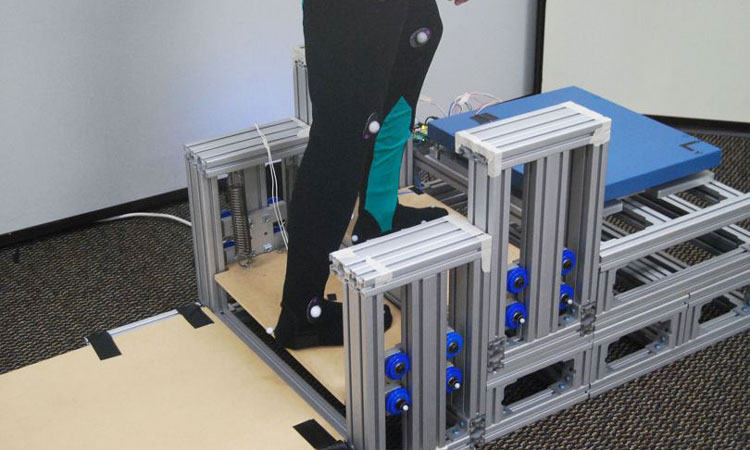When entering a 15-storey office building and given the choice, most people will opt to take the elevator rather than trudge up flights of stairs. While we’re still waiting for the Wonkavator to be commercialised, there may be a less intense option for making the ascent.
A group of mechanical engineers, biomedical engineers, and computer scientists in the US has developed a set of ‘energy-recycling stairs’ that allow humans to save energy when both climbing and descending.
The work, published in the journal PLOS One, sees the spring-loaded stairs compress when someone steps downwards, saving 26% of a person’s energy by dampening the impact. And, when going up, this stored energy can be unleashed to boost a person’s step by 37%.
It’s foreseen the technology could be implemented to help the elderly and those with mobility problems navigate stairs. If developed further, the system could be used to replace stair-lifts and the need to install elevators in buildings.
“Stair negotiation is a demanding task that limits the independence of individuals with mobility impairments such as muscle weakness, joint pain, or reduced sensorimotor control,” the research paper, Co-authored by Georgia Tech’s Karen Liu, said. “Stair negotiation is ranked among the top five most difficult tasks in community-residing older adults”.
In a video published alongside the research paper, a test subject can be seen to walk down a two-step prototype of the Energy-Recycling Assistive Stairs (ERAS). When coming down, each individual stair lowers until it locks into the final position (using an electromagnetic latch) and when the person is walking up the stairs it unlocks and provides extra energy for the step.
The engineers explain that the system could be installed on existing staircases and doesn’t have to be permanently in place.
Credit: Yun Seong Song et al
Each of the staircase’s steps is tethered by springs and contains pressure sensors – the steps are 17cm high and 28cm deep and are surrounded by aluminium frames. The springs within the system essentially work as a cushion and brake to reduce the amount of strain put on the ankle of the person walking. During tests of the two-stair setup, healthy volunteers (weighing between 46-100kg) were used and the academics found they could benefit ‘without explicit instructions or training’.
Multiple trials of the steps were completed, with some conducted with the steps working and others without assistance. This allowed for the impact of the stairs to be measured. “In over 360 trials across nine participants, no adverse events or concerns about safety were reported,” the research paper said.
The ERAS is described as the ‘first non-wearable device’ that can recycle human movement energy to provide assistance. In June, researchers at Carnegie Mellon revealed an exoskeleton and prosthetic limb design that allows the wearer to improve their walking efficiency by around 24.2%. Separately, an exoskeleton that’s able to detect falls using an algorithm has been created.
All of these technologies have been designed with the idea of helping to improve the mobility of people who struggle to walk and need more development until they’re used in real-world scenarios. “While the current hardware prototype allows initial investigation of the assistance provided by ERAS, future evolutions of ERAS could allow higher usability in practical settings,” the academic paper said.
The research team is working on a way to allow the stairs to function without a person having to descended first. The team also wants to remove the electromagnetic latch, and conduct trials on those who could directly benefit from the additional support.



Comments are closed, but trackbacks and pingbacks are open.